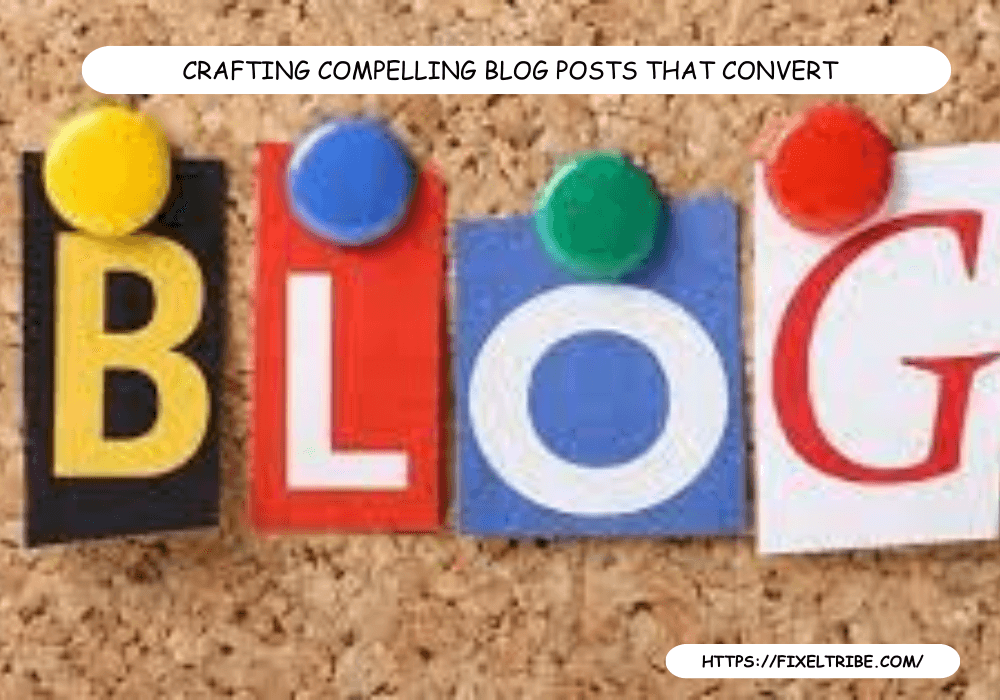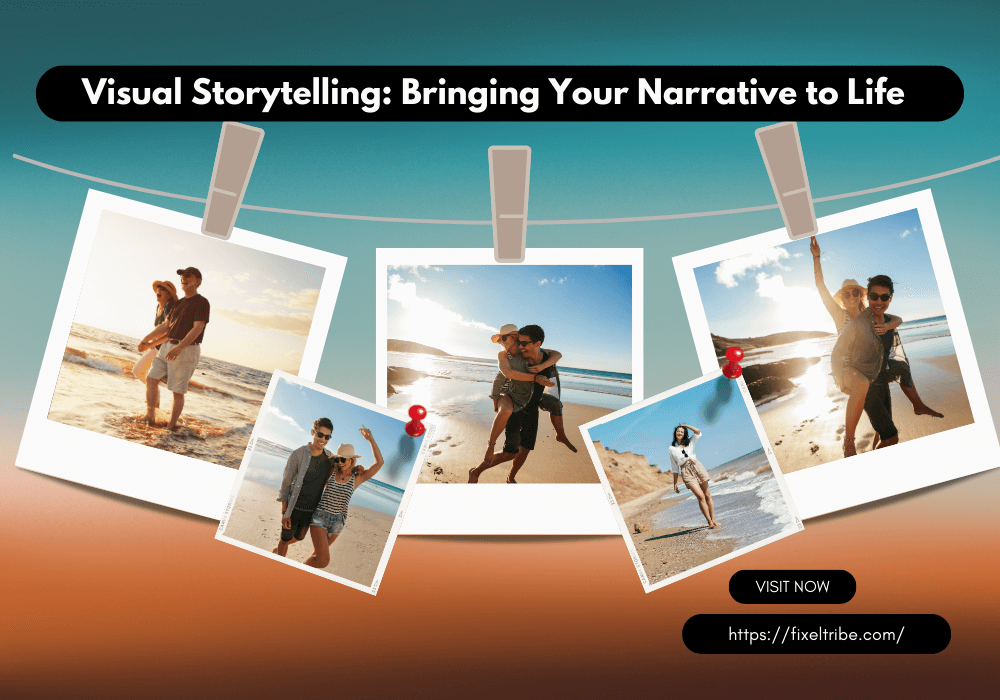How to Craft Compelling Blog Posts That Convert
Storytelling is a timeless art that transcends cultures and eras. It’s a fundamental way humans connect, understand, and communicate. In today’s digital landscape, storytelling has evolved into an essential tool for bloggers and content creators. The ability to craft compelling narratives not only captivates readers but also drives conversions and engagement. In this article, we will explore the power of storytelling and provide insights on how to harness it to craft blog posts that convert.
The Essence of Storytelling/ The Power of Storytelling.
At its core, storytelling is about conveying information and emotion through a structured narrative. It’s the art of using words to create immersive experiences that resonate with your audience. Stories have the power to transport readers into different worlds, evoke emotions, and leave a lasting impact. But what is it that makes storytelling such a potent force in the realm of content creation?
Empathy and Connection: Stories have an innate ability to connect people on an emotional level. When you share a personal or relatable story, readers are more likely to empathize with your experiences and perspectives. This emotional connection fosters a sense of trust and authenticity.
Memorability: Stories are inherently memorable. We tend to remember narratives and characters far better than dry facts and statistics. By weaving your message into a story, you make it more likely that your readers will remember and engage with your content.
Engagement: Stories are engaging. They draw readers in, piquing their curiosity about what happens next. When readers are engaged, they are more likely to stay on your page, read your content thoroughly, and take the desired actions, such as signing up for newsletters or making a purchase.
Crafting Compelling Blog Posts That Convert

Storytelling is not merely an art form; it’s a strategic tool that, when wielded effectively, can turn your blog posts into conversion magnets. In this section, we’ll roll up our sleeves and get into the nitty-gritty of how to harness the storytelling prowess to craft blog posts that don’t just inform but also inspire action and drive conversions.
Understanding Your Audience Inside Out
Before your fingers touch the keyboard, embark on a journey of understanding your audience at a profound level. What are their deepest desires? What keeps them up at night? What solutions are they seeking? A successful storyteller is also a keen observer and listener. Dive into surveys, conduct interviews, and explore social media discussions to gain insights into your audience’s pain points and aspirations.
Start with a Captivating Hook
Every great story begins with a hook that draws readers in from the very first sentence. This is your opportunity to grab their attention and make them want to read more. Your hook can take various forms:
• A Thought-Provoking Question: Encourage readers to ponder a question related to your topic.
• A Surprising Fact: Present a startling statistic or a little-known fact that piques curiosity.
• An Engaging Anecdote: Share a personal or relatable story that connects with the theme of your blog post.
• A Bold Statement: Make a bold and intriguing statement that challenges conventional wisdom.
The key is to ignite curiosity and create an irresistible urge to keep reading.
Building a Narrative Arc
A well-structured narrative can be likened to a rollercoaster ride. It has its ups, downs, twists, and turns, all designed to keep readers engaged. In the context of your blog post, this structure can be broken down into several key components:
• Introduction: Set the stage by introducing the topic, the central challenge or question, and why it matters.
• Rising Action: Build tension and anticipation. Present the problem or dilemma your readers can relate to. Explain why it’s important to address this issue.
• Climax: Reach the peak of your narrative where the central message or solution is unveiled. This is the turning point of your blog post.
• Falling Action: After the climax, gradually guide readers toward a resolution. Offer insights, strategies, or answers to the challenge presented.
• Resolution: Conclude the narrative with a satisfying resolution. Summarize the key takeaways and provide a clear path forward.
Character Development and Relatability
Characters are the heart of every story, even in the context of a blog post. Characters can be real people, fictional personas, or even your own experiences. They serve as relatable elements that connect with your readers. Your readers should be able to see themselves in these characters, empathize with their challenges, and root for their success. By humanizing your content, you make it more engaging and relatable.
Evoke Emotion and Empathy
Emotion is the lifeblood of storytelling. Stories that strike an emotional chord resonate deeply with readers. Whether it’s sharing personal experiences, recounting emotional journeys, or tapping into universal feelings, emotions make your content memorable. When readers feel emotionally connected, they are not just readers; they become participants in the story.
In ‘The Power of Storytelling,’ we’ll delve into the art of captivating narratives. Whether you’re a marketer, writer, or content creator, understanding the importance of storytelling is paramount. To aid in your journey, don’t miss our comprehensive guide on ‘10 Essential Tips for Effective Content Creation.‘ It complements the insights provided here, allowing you to craft compelling stories that resonate with your audience and strengthen your brand’s message.
Conflict and Resolution
Every compelling story has an element of conflict and resolution. Your blog post should address a central challenge or problem and guide readers toward a solution or resolution. This resolution can be a product, service, or piece of valuable advice that directly addresses the issue presented in your narrative.
Visual Storytelling: Bringing Your Narrative to Life

As the age-old saying goes, “A picture is worth a thousand words.” In the realm of storytelling, this adage couldn’t be more accurate. Visuals play an instrumental role in enhancing the impact and effectiveness of your narrative. They can elevate your blog posts from mere text to immersive, memorable experiences. Here’s how to harness the power of visual storytelling and effectively incorporate visuals such as images, videos, and infographics into your blog posts.
1. Images that Paint a Scene
Images are powerful tools for setting the stage and evoking emotions within your storytelling. Whether you’re recounting a personal experience, explaining a complex concept, or illustrating a key point, images can serve as visual cues that help readers connect with your narrative.
• Relevance: Choose images that are directly relevant to your story. An image should enhance the reader’s understanding of the narrative, not confuse or distract them.
• Emotional Impact: Opt for images that resonate with the emotions you want to convey. For example, if your story is about triumph over adversity, include images that reflect resilience and determination.
• Consistency: Maintain a consistent style and tone with your images to ensure they seamlessly integrate into your blog post. Consistency in image placement, size, and formatting can enhance readability.
2. Videos for Dynamic Engagement
Videos are dynamic storytelling tools that can capture attention and convey complex ideas effectively. They enable you to add movement, sound, and personality to your narrative, making it more engaging and memorable.
• Demonstration: Use videos to demonstrate a process, showcase a product, or provide a visual tutorial. This can be particularly effective when explaining how something works.
• Interviews and Testimonials: Incorporate video interviews or testimonials to add a personal touch to your narrative. Hearing and seeing real people share their experiences can enhance credibility and relatability.
• Visual Storytelling: Create video narratives that complement your written content. You can share behind-the-scenes footage, vlogs, or short video stories that reinforce the themes of your blog post.
3. Informative Infographics
Infographics are fantastic tools for simplifying complex information and statistics, making them easier for readers to digest. They’re especially effective when your blog post contains data-driven insights or step-by-step processes.
• Data Visualization: Transform data into visually appealing charts, graphs, or diagrams. Infographics can help readers grasp the key takeaways from your data without overwhelming them with numbers.
• Process Explanation: Use infographics to break down intricate processes or workflows. Step-by-step infographics can guide readers through complex concepts in a visually intuitive way.
• Concise Summaries: Create summary infographics that encapsulate the main points of your blog post. These visuals can serve as quick references for readers who want to revisit key information.
4. Captions and Alt Text
While incorporating visuals, don’t forget the importance of captions and alt text. Captions can provide context, highlight key details, or even add a touch of storytelling to your visuals. Alt text is essential for accessibility, ensuring that readers with visual impairments can understand the content of your images.
• Captions: Craft captions that enhance the narrative of your blog post. A well-written caption can complement the image or video, reinforcing the message you want to convey.
• Alt Text: Write descriptive alt text for all images and visuals. Be concise but thorough, providing information that allows those using screen readers to understand the content and context of the visual.
Incorporating visuals into your blog posts isn’t just about decoration; it’s about enhancing the storytelling experience for your readers. Visuals can bring your narrative to life, evoke emotions, simplify complex concepts, and engage your audience on a deeper level. When used strategically and thoughtfully, they become integral components of your storytelling toolkit, ensuring that your blog posts not only inform but also inspire and resonate long after they’ve been read.
The Enduring Power of Storytelling
In conclusion, storytelling is not just a tool in the content creator’s toolbox; it’s the very essence of human communication. When harnessed effectively, it has the power to transform your blog posts into compelling narratives that captivate readers, evoke emotions, and drive conversions. By understanding your audience, crafting a well-structured narrative, and incorporating elements of character, emotion, and resolution, you can create blog posts that not only inform but also inspire and convert.
The enduring power of a liar lies in its capability to transcend the digital realm and produce genuine connections with your followership. So, as you embark on your journey of crafting compelling blog posts, remember that behind every click, share, and conversion is a story waiting to be told. Embrace the art of storytelling, and watch your blog posts come to life, resonating with readers in ways that inspire action and engagement.
Conclusion: Mastering the Art of Blogging through Storytelling
In the dynamic world of digital content creation, the age-old art of storytelling has emerged as a powerful ally for bloggers and content creators. We’ve embarked on a journey through the realms of narrative, understanding how storytelling is more than just words on a page—it’s the heartbeat of connection, engagement, and conversion.
As we conclude our exploration of crafting compelling blog posts that convert, it’s clear that storytelling isn’t a mere tactic; it’s a transformational strategy. It’s the key that unlocks the hearts and minds of your audience, inviting them to join you on a journey of discovery, empathy, and action.
We’ve learned that the essence of storytelling lies in understanding your audience, starting with a captivating hook, and crafting a narrative arc that takes readers on a meaningful adventure. We’ve delved into the significance of relatable characters, the power of evoking emotions, and the resolution of conflicts as essential elements of storytelling within your blog posts.
Visual storytelling emerged as a dynamic tool, adding depth and vibrancy to your narratives. Through images, videos, and infographics, you can paint vivid scenes, provide dynamic demonstrations, and simplify complex information, all while enhancing reader engagement.
But beyond these practical insights, one crucial message resonates: every blog post is a chance to connect, to inspire, and to convert. It’s a canvas upon which you paint stories that leave indelible marks on your readers’ minds and hearts.
In the digital age, where attention is a precious commodity, storytelling is your secret weapon. It’s the force that transforms your blog posts from informative articles into unforgettable experiences. When you master the art of storytelling, your blog posts become more than mere text; they become invitations to explore, to feel, and to act.
So, as you embark on your journey as a storyteller and blogger, remember the enduring power of stories. Embrace the challenge of crafting narratives that not only inform but also inspire, narratives that resonate long after your readers have clicked away. In a world inundated with content, it’s the stories that linger—the stories that move people, spark conversations and drive conversions.
As you pen your next blog post, let your inner storyteller guide the way, and watch as your words transform into bridges that connect you with your readers, forging a bond that transcends the digital divide. Because in the end, it’s the stories we tell that have the power to change the world, one blog post at a time.
FAQs
Following are some of the frequently asked questions (FAQs) related to “The Power of Storytelling: How to Craft Compelling Blog Posts That Convert”:
1. What is storytelling in the context of blogging?
• Storytelling in blogging is the art of using narratives to engage, captivate, and connect with your audience. It involves crafting blog posts in a way that incorporates elements of storytelling, such as relatable characters, emotional arcs, and a clear narrative structure.
2. Why is storytelling important in blog posts?
• Storytelling is important in blog posts because it helps make your content more relatable, memorable, and engaging. It creates a deeper connection with readers, leading to increased retention, sharing, and conversion rates.
3. How can I start my blog post with a captivating hook?
• To start your blog post with a captivating hook, consider using a thought-provoking question, a surprising fact, an engaging anecdote, or a bold statement. The goal is to grab the reader’s attention and make them eager to continue reading.
4. What is a narrative arc, and why is it important in storytelling?
• A narrative arc is the structure that a story follows, including elements like introduction, rising action, climax, falling action, and resolution. It’s important in storytelling because it provides a framework that keeps readers engaged, builds anticipation, and delivers a satisfying conclusion.
5. How can I incorporate visuals into my blog posts for storytelling?
• You can incorporate visuals like images, videos, and infographics to enhance your storytelling. Use images that are relevant and emotionally resonant with your narrative. Videos can bring dynamic elements to your story, and infographics can simplify complex information.
6. What is the role of character development in storytelling for blog posts?
• Character development in blog post storytelling involves creating relatable personas or using real individuals to convey the central message or theme of your content. Well-developed characters add depth and connect readers on a personal level.
7. Can storytelling be used for different types of blog content, such as informative or instructional posts?
• Yes, storytelling can be used in various types of blog content. Even informative or instructional posts can benefit from storytelling elements. Stories can make complex information more accessible and engaging for readers.
8. How can storytelling help drive conversions in blog posts?
• Storytelling can drive conversions by creating an emotional connection with readers. When readers are emotionally engaged, they are more likely to take the desired action, such as subscribing to your blog, signing up for a newsletter, or making a purchase.
9. Is it essential to use storytelling in every blog post?
• While storytelling can enhance many types of blog posts, it may not be necessary for every piece of content. The decision to use storytelling should align with your content goals and the preferences of your target audience.
10. Can I incorporate storytelling into my existing blog posts, or do I need to start from scratch?
• You can certainly incorporate storytelling into existing blog posts. Look for opportunities to add narrative elements, such as anecdotes, character development, or emotional hooks, to enhance the impact and engagement of your existing content.


Add a Comment